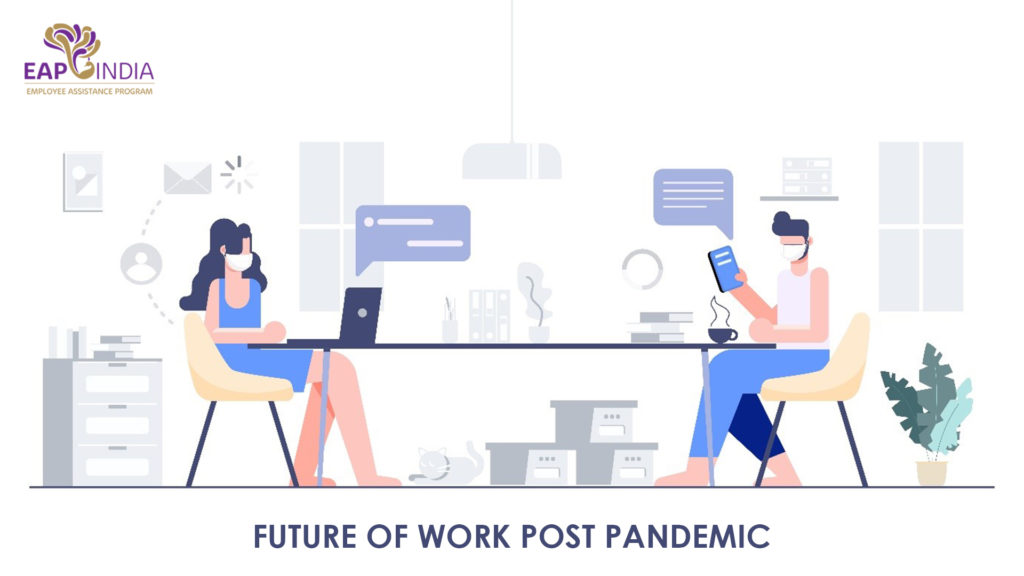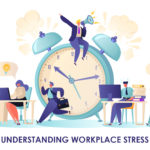As we are making our way towards the reopening of a few offices, many of us are starting to envision a time when we can return to our regular office working desks. It is hard to imagine going back to our routine lives after a huge period of lockdown. This new corporate world has made us value our organic, non-robotic humanity more than ever before.
Well, some things will surely go back to the way they were, but for others, there will be a new normal.
Following are some ways which show us how our work in the future may look like:
1. Permanently Flexible Future:
There will be a significant transition to remote working- in the future; and organizations and their employees will have to be flexible about the changes happening.
Chris Kozup says that there will be some shifts in the workplace attitude and culture that will help the organization in becoming flexible and accommodating of different working styles. Few companies with extremely strict rules may loosen up for their employee’s to encourage flexibility of the new working age. Rigidity of an office-only based environment won’t do well with the younger generations.
2. Get Used To Working From Home:
With remote working or working from home becoming a new norm, people will get used to having team meetings through online platforms, they will turn more towards virtual tools since the internet speed and connectivity will start to become faster and much reliable.
For some people, working from home is a blessing but it comes with balancing both the work life by being ‘available’ for completing tasks to being ‘available’ at home to spend quality personal life. Each generation has their individual set of values with which they experience work from home. It has been found that around 49% of the younger employees feel they are less productive while working from home as compared to while coming to office. Around 51% felt that they were more distracted while working remotely.
3. Unsteady Work-Personal Life Balance:
While working from home seems pretty convenient and comfortable, simultaneously it can be considered difficult for professionals to separate their home and work life. Over the time of working from home, supervisors have gotten used to seeing their employees in their natural habitat; this hardly separates their work life and personal life. If you are happy at home and dejected at work, then that formula won’t work.
Adam Grant suggests that work-life balance according to him has always been a myth. He says that having time to do everything in a day, i.e. spending time with your family, doing your job, prioritizing health and friendships and also having enough time to care about your hobbies sounds like an unrealistic harmony to him.
4. Video Virtuoso:
A necessary skill of change in working life would be to become skilled at video calling. People have already integrated online platforms like Zoom, Google Meet, and Skype to have their office meetings.
William Arruda says, “The usage of video learning has started to fully integrate the work experience in an astonishing variety of ways. Most people have got used to using video overnight and there’s no one’s who is putting the video camera back into the closet.”
5. Less Face To Face Social Interaction:
With increase in the usage of video conferencing, tele-conferencing and many organizations that will start working with only 50% capacity, it is highly likely that there will be reduction in face to face social interaction at workplaces.
A research study suggested that around 56% of young employees liked going to office because they liked being social with their co-workers. They also feel a lot easier to share ideas in person rather than online.
6. More Co-Working Space Will Emerge:
To be able to maintain social distancing within offices, there are chances likely that few organizations will have rotating shifts and hardly full office strength. Cramped up organizations will turn to cafes and co-working spaces and more such co-working spaces will emerge.
Research by Dave Cook has shown that co-working spaces were projected to increase more than 40% worldwide before the pandemic.
7. Less Commute:
Many individuals crave working hour flexibility but they are also aware that being around others boosts productivity. People who generally work from home also crave physical closeness that comes with being alongside other people, mentions Dave Cook.
A shift to working from home will also reduce the commute time to reach the office. By saving time on commuting, organizations will expect their employees to work harder and may monitor their performance and productivity more so now than before.
Conclusion
With the lockdown being lifted up soon and many organizations planning to start working will have to get used to seeing their offices partly empty. Some organizations will loosen up by providing their employees with an option of working remotely. Small business offices may shift to sections of co-working space and keep small office rooms to conduct small team meetings.
Even with offices starting to work, commuting to work will not go back to the way it was. As and when new homes will be built, work from home (WFH) will be considered as a top priority for many.
Time period post pandemic will have a huge impact on us as individuals, as a society and as a workforce. You can no longer think of your ‘work-life’ and ‘personal life’ as separate while working remotely. Although, a positive thing out of a mixed up work and personal life can give you a wake-up call to go and find more meaningful work where you feel more inspired and create an impact.
“Businesses will go on. Life will continue. It may only look different than it was before.”




